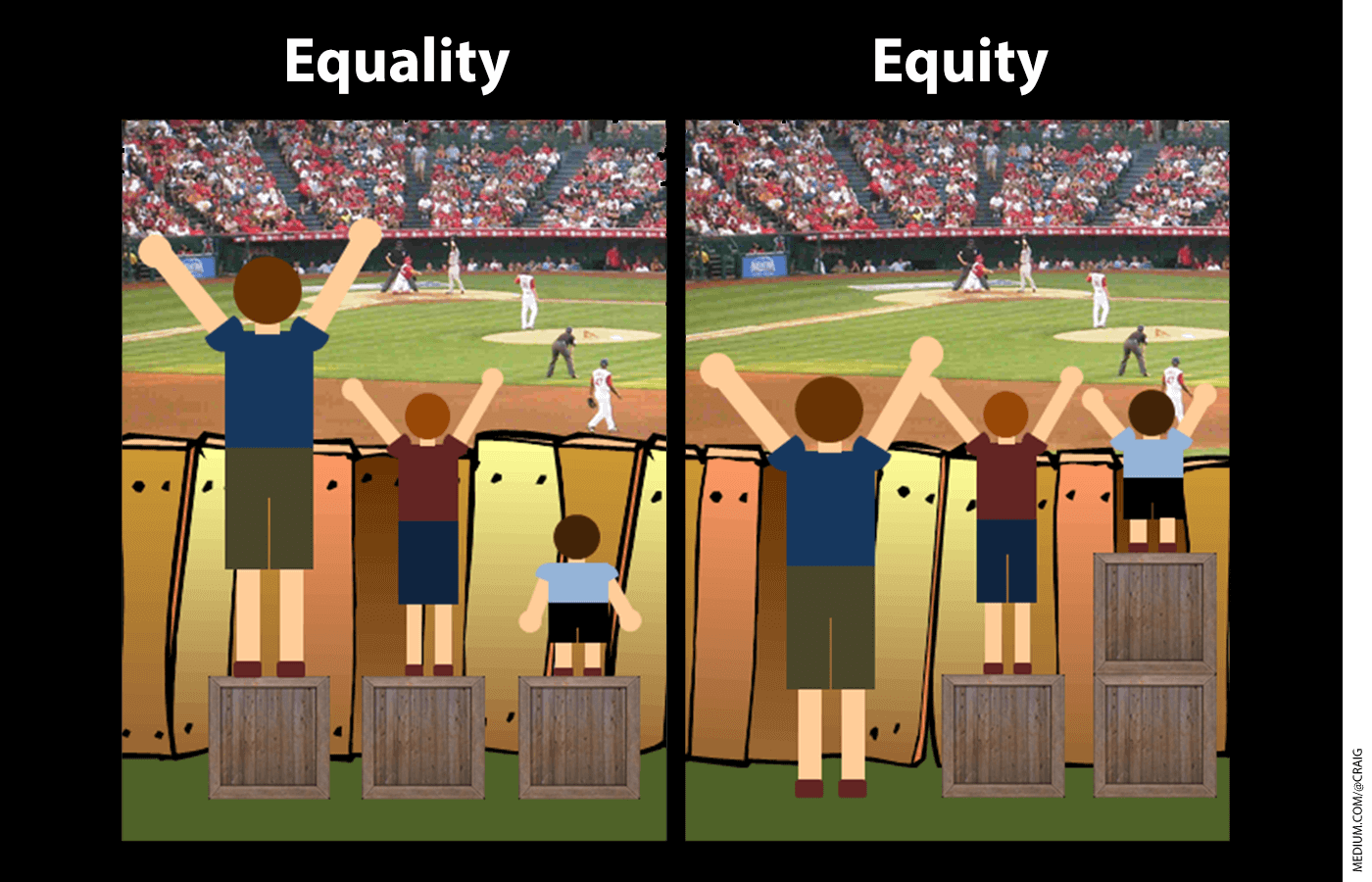
Recently, in the midst of a short, charming interview, an award-winning 2nd grade dual-language teacher casually offered an offhand comment that gave me pause. She said, “With gentrification, there are many more affluent families in the neighborhood who are attracted to the benefits of bilingual education. It takes a conscious effort on my and the school’s part to make sure that our dual-language classrooms serve our Latinx families and put their language needs first.” The teacher later added, “Latinx children are diverse and have varying needs,” and explained, “I teach for equity, not equality.”
The interview clearly revealed a thoughtful, committed educator. But that’s what made these quotes jump out for me. I appreciated the teacher’s acknowledgment that children are diverse and have varying needs, and that some children will require more teacher time than will others—but I found disconcerting the suggestion that those determinations should be grounded in ascriptive characteristics rather than the needs of each learner.
In the course of an hour, day, or year, teachers will inevitably spend more time with some students than others based on their learning needs. Given that, I have zero problem with a dual-language teacher saying that her students who are struggling to master English need more of her time and attention. Where I do get deeply concerned is when that determination is framed not as a matter of what learners need but in terms of ethnic or racial identity.
After all, it’s not just “Latinx children [that] are diverse and have varying needs”—the same can be said, I firmly believe, of all children. Indeed, efforts to improve schooling over the past half-century were built on the foundational premise that learners are different and that educators should strive to meet the needs of each of their students. Whether it travels under the guise of individualized education programs, multiple intelligences, differentiated learning, personalization, student-centered learning, the whole child, or much else, this understanding has guided school improvement for decades.
Although the goal of meeting the needs of each learner may be wholly aspirational, it provides a moral compass for the profession and a clear basis for explaining exactly why it’s a moral failure when some kids get systematically shortchanged. And, while we’re miles from where we need to be, this goal has allowed schools to become far more attuned to the varied needs of students today than they were a generation ago.
The interview quotes struck me as they did because they seem reflective of an emerging notion of “anti-racist” equity that rejects this moral postulate by actively encouraging educators to pick and choose which students to favor based upon ascriptive characteristics. Take, for instance, Ibram X. Kendi’s assertion in the hugely successful How to Be an Antiracist that “if discrimination is creating equity, then it is antiracist” and that “the only remedy to past discrimination is present discrimination.” When educators embrace this philosophy (presuming, of course, to know precisely which kinds of “discrimination” are justified), then discrimination becomes not only ethically defensible—but a moral imperative.
I do hope that those enamored of Kendi’s vision have fully considered the implications of his addendum: “The only remedy to present discrimination is future discrimination.” After all, I’m not sure who really wants to embark on a future which invites an endless, spiraling cycle of retaliatory discrimination—all turning on who decides what constitutes “equitable” discrimination at a given moment. I think tomorrow’s students and teachers just might damn us for pursuing such a course. The thing about professional norms is that they can be easy to take for granted and more fragile than we realize.
Ultimately, I fear that today’s avatars of “equity” and “anti-racism” aren’t as focused as they should be on the ethical and practical implications of the professional code they’re birthing. After all, I’d think it would be self-evident that the push for equity stumbles into a truly gruesome place when educators are being trained or directed to shortchange some students based on how they look or where they live.
Finally, for those who think I’m raising a red herring, or that I’m distorting or misunderstanding a healthier, more general principle, I’d welcome an explanation as to what I’m getting wrong. Indeed, I’d find such an explanation deeply reassuring. Because, as things stand, I’m deeply troubled by a vision of educational equity which seems to raise profound ethical concerns.
Frederick Hess is director of education policy studies at the American Enterprise Institute and an executive editor of Education Next.
This post originally appeared on Rick Hess Straight Up.


